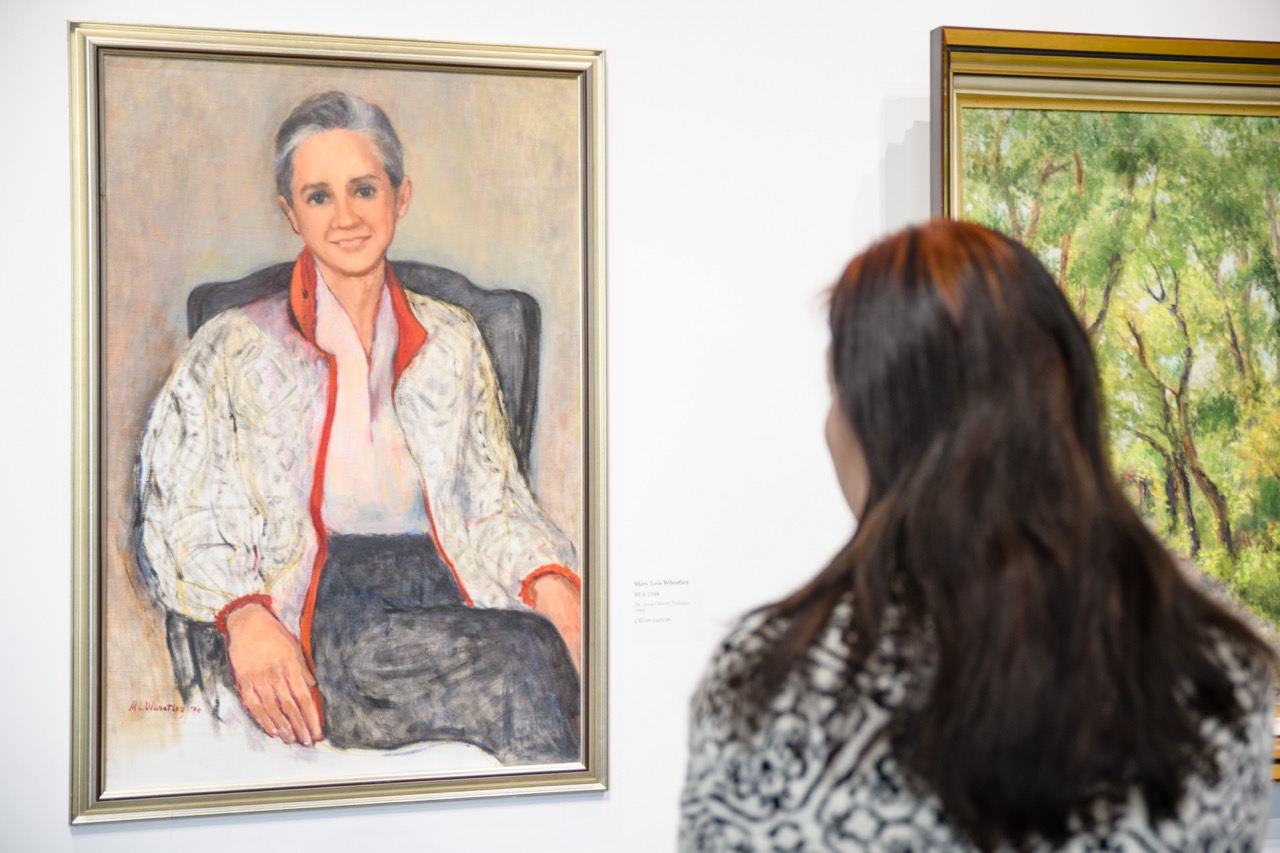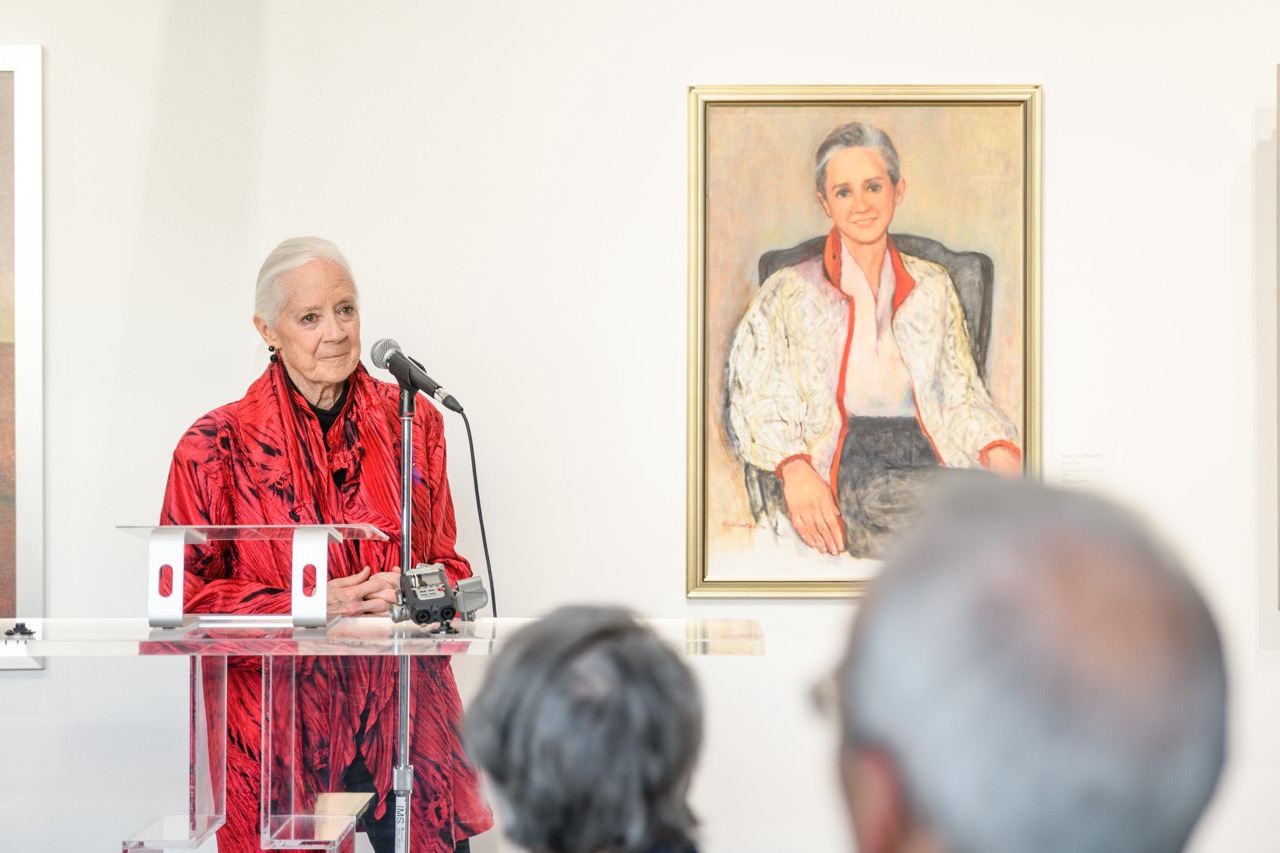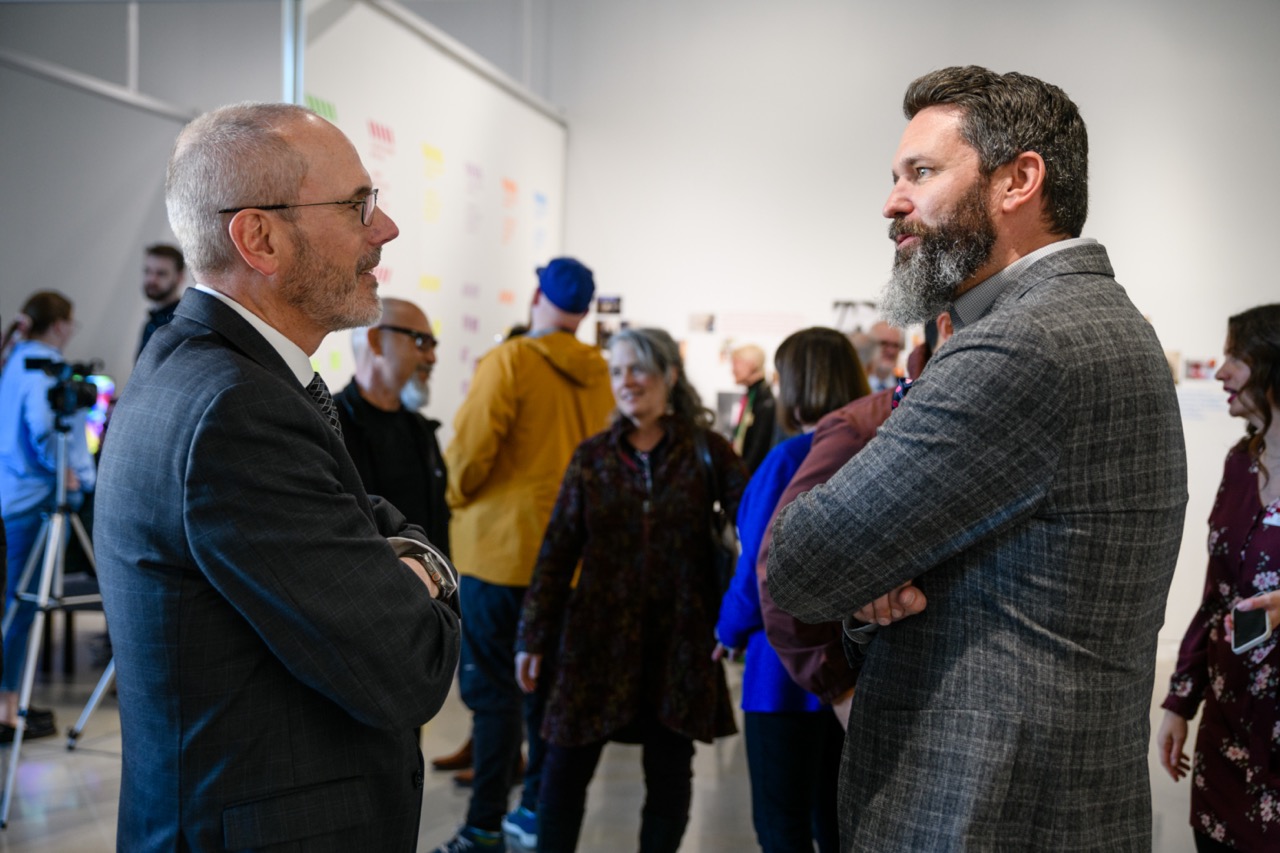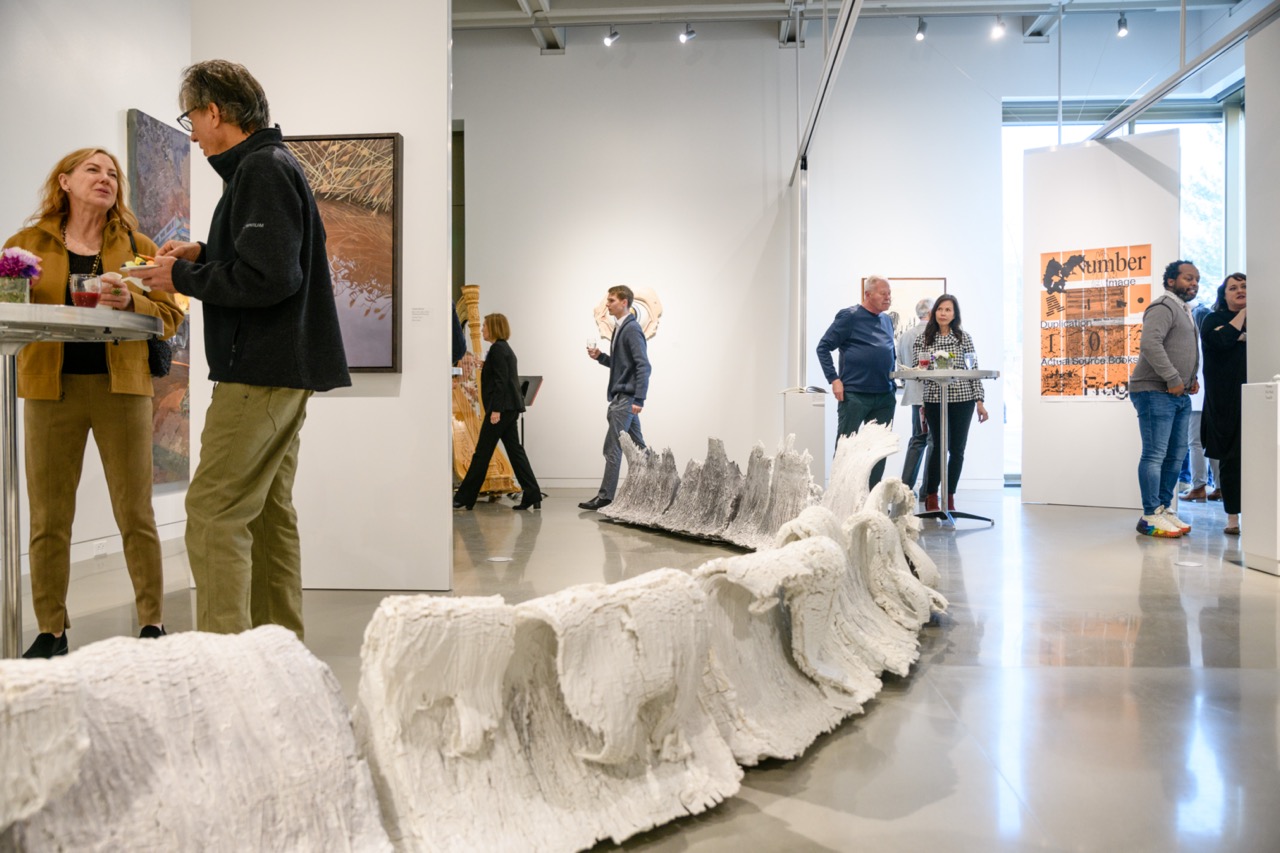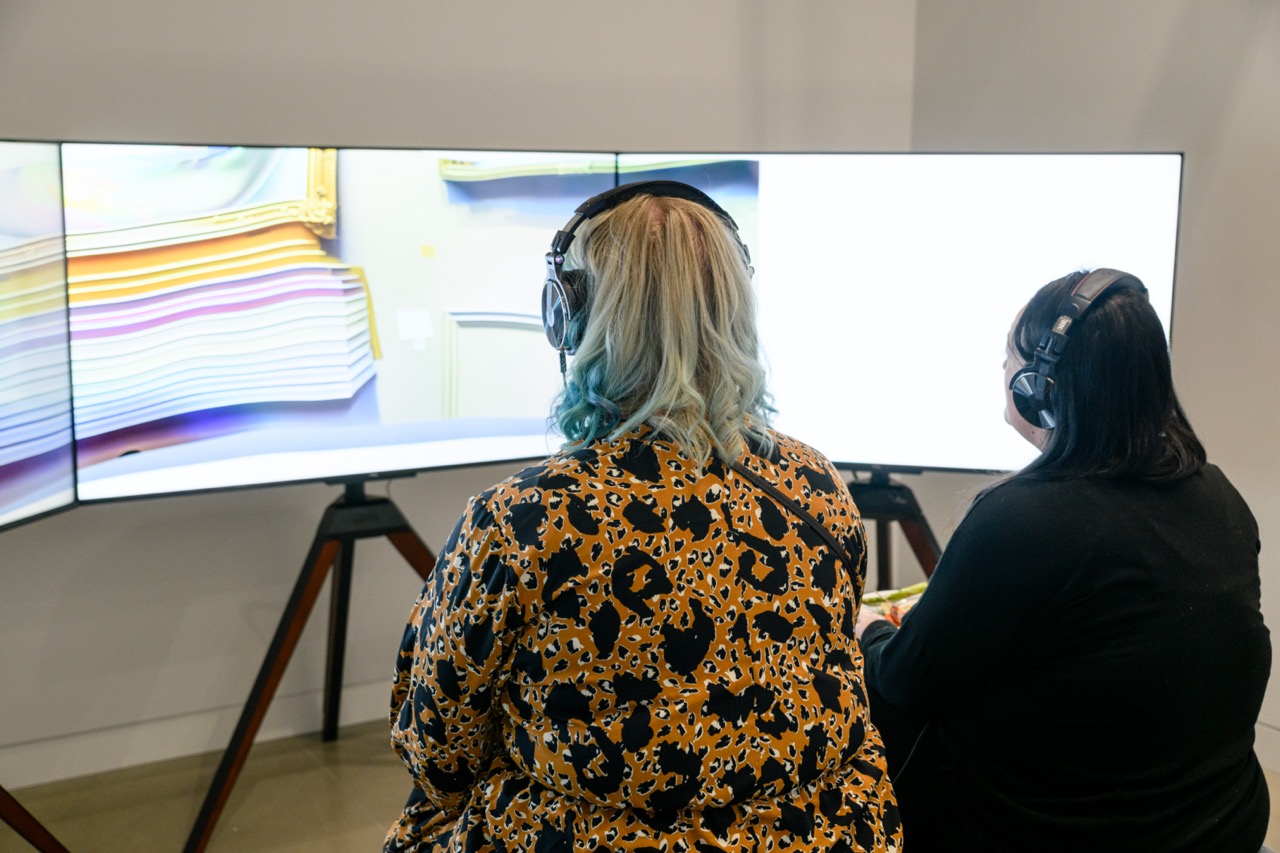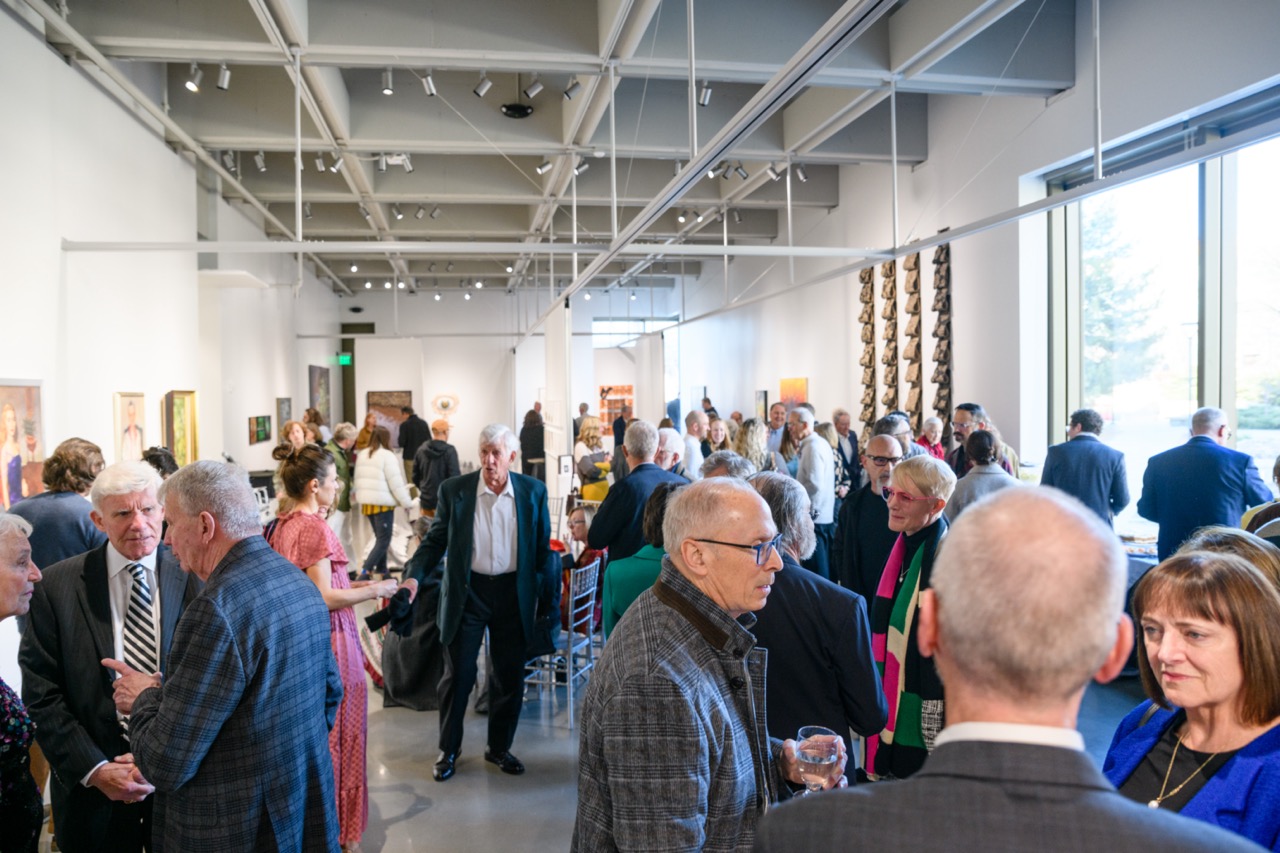Donors, patrons, and CFA leadership mingle at the opening of the new Gittins Gallery first exhibition, “Return,” featuring alumni from the Department of Art & Art History
WRITTEN BY MARINA GOMBERG
PHOTOS BRANDON CRUZ
The space begs your presence the second you walk through its doors. It’s an invitation made by light and radiant beauty, enticing you to come in and experience new things.
This is the new Alvin Gittins Gallery on the University of Utah campus. An airy 2,360 square-foot exhibition space filled with natural light from the walls to the floor-to-ceiling windows. Its beautiful starkness is punctuated by color, texture, and meaning — the works that adorn its walls and rooms.
Retrofitted to be a state-of-art facility, the new gallery located in the renovated Film & Media Arts Building boasts two new video/installation spaces, an additional small gallery in the foyer, more square footage, energy efficient lighting, movable walls, restrooms located adjacent, kitchen for catering, ADA accessibility, adjustable climate control, and sound control.
Much about it is new. But not its name, thanks to the Wheatley family.
Since the 1980s, the Department of Art & Art History has enjoyed a gallery named after famed portrait artist and former professor Alvin Gittins. And even though the namesake’s gallery has moved, his legacy remains prominent and palpable.
Famous for being among America’s greatest portrait artists, Gittins’ talents are known the world over. But perhaps his greatest legacy is one those of us here in the U community know best: his impact as a teacher — someone who didn’t just share his love for his craft, but someone who could inspire that same passion and excellence in others.
Born in England, he moved to the United States in 1946 and attended BYU, though his allegiance would turn from blue to red in short order. By the following year, he began his tenure as a faculty member in, and later as chairperson of, the department.
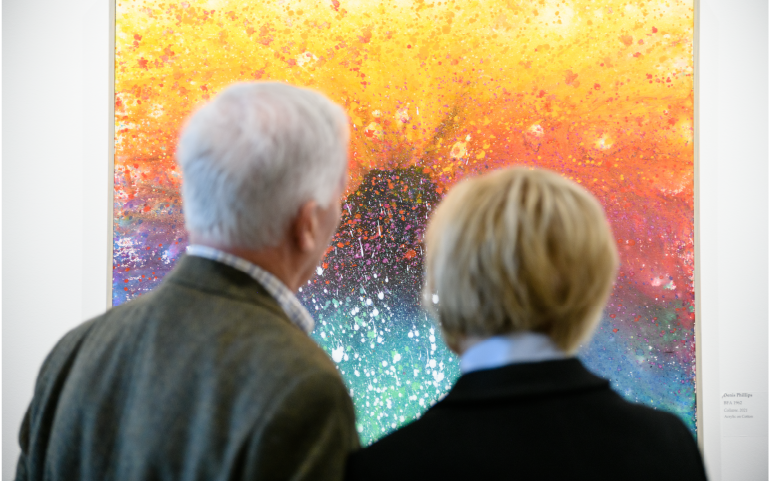
Patrons viewing “Collapse” by Denis Phillips in the new Gittins Gallery located in the renovated Film & Media Arts Building, Photo: Brandon Cruz
Gittins was an advocate of academic realism who practiced a rigorous technical approach to teaching and who received the Distinguished Teaching Award in 1976 and the Utah Academy of Sciences, Arts and Letters Distinguished Service Award in Arts and Letters in 1980. As the university’s artist in residence Gittins painted 89 portraits of individuals connected to the institution including presidents, researchers, scientists, physicians, and artists.
With its relocation from the ART Building, the new gallery is an even more prominent anchor in the U’s visual arts corridor on campus along with the Utah Museum of Fine Arts and the Departments of Art & Art History and Film & Media Arts.
Its doors officially opened in spring 2023 with an exhibition called “Return” featuring alumni of the Department of Art & Art History from various disciplines including Art Teaching, Book Arts, Ceramics, Graphic Design, Illustration, Painting and Drawing, Photography, Printmaking, and Sculpture.
Among the works were five very special paintings: a self-portrait by Gittins, a portrait by Gittins of Mary Lois Wheatley, a protégé of his and a beloved wife, mom, and friend, and then three works by Mary Lois (a self-portrait, a landscape, and her portrait of Anne Osborn).
A painter from an early age, Mary Lois studied art in the department and graduated in 1948 with an enduring passion for portraiture nurtured by Professor Gittins. Like him, she didn’t paint just to create resemblances of others, but to illuminate their true selves.
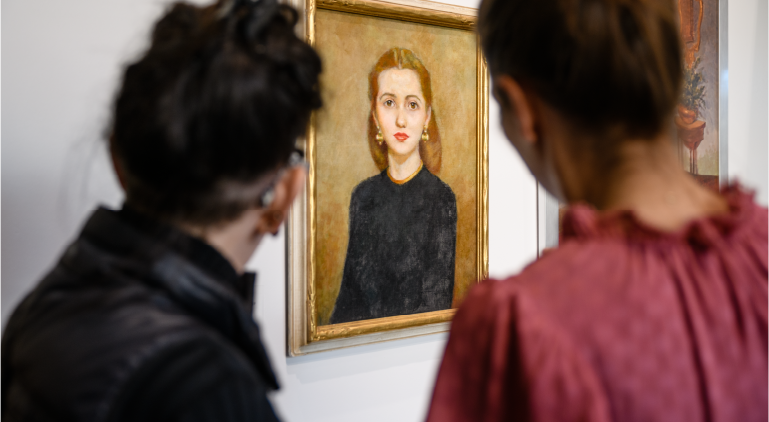
Patrons viewing alumna Mary Lois Wheatley’s self portrait at the opening reception for “Return” featuring Art & Art History alumni, Photo: Brandon Cruz
The naming of the gallery was made possible by the generosity of the Wheatley family and their reverence for their mother’s passions. At an opening reception of the space, Mary Lois’s son Charles spoke to the packed crowd.
He pointed back to the stunning portraits of his mom as he spoke about her love of painting as a way of expressing herself and seeing others. His admiration for her emanated like light from the podium.
Mary Lois’ artistic drive was fueled by her time at the U and acted as a springboard for her move to Manhattan to study at the prestigious Art Students League of New York. That’s where she met aspiring engineer, Jack Wheatley, who was studying at West Point Military Academy and who would go on to become the love of her life.
Their relationship blossomed, they married in 1952, and over the years, Mary Lois’ collection of portraits grew, illuminating those she loved most: their children, grandchildren, and her most beloved friends.

Dr. Anne Osborn, Distinguished Professor of Radiology at the U, is one of the latter. Dear friend of Mary Lois, Osborn is also deeply inspired by the arts. She spoke at the reception about the power and value of supporting creative and cultural pursuits.
And she walks the walk.
In another heartwarming tribute to the Wheatley matriarch, Osborn, along with the Wheatley family, established the The Mary Lois Wheatley Presidential Endowed Chair in Art and Art History — the first for the department — which was bestowed upon Department Chair, V. Kim Martinez.
The endowment signifies the considerable prestige of this academic appointment, illustrates the commitment on the parts of those whose philanthropy made it possible, and provides critical support necessary to transform new ideas into reality.
“The dynamic environment created within the department is fertile ground for those serious about art-making, graphic design, research, critical discourse, and teaching,” Martinez said when she accepted her new role. “Our faculty are dedicated to excellence and providing an open, respectful center for diversity and creative expression. The department mentors students in innovation, critical thinking, craft, exploration, and are creating exciting opportunities for interdisciplinary collaborations.”
And now that place, both the physical and metaphorical, is even richer with potential, and will allow for more contemporary and experimental works to be created with an eye to future possibilities for artists — both students and professional — to grow and expand their research. ▪


